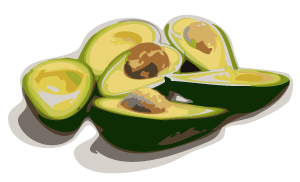High pressure pasteurization

In an age where online shopping and credit cards allow us to buy goods worldwide it is unexpected that one should have difficulty buying anything. But I have. There are many food products in the market that I have tried to buy, but failed. Want some pink guava puree: easy. Want some Blue Congo Potatoes or in-shell pasteurized eggs: that may require some travel.
For some time I have wanted to write about using high pressure to pasteurize food without heat. The technique is used to treat the Calavo Guacamole. The guacamole is pasteurized with pressures of 7,000 times the atmospheric pressure, or seven times more than the pressure at the deepest point in the oceans. The effects of the high pressure in living things is still being worked out. The high pressure does not crush a micro-organism into oblivion — the pressure inside it is the same as the pressure in the surrounding fluid, so no crushing is possible. Instead, it seems the high pressure so bends large proteins out of shape that they stop working. Ribosomes that help make other proteins and membrane proteins that help bring in nutrients to cells stop working and the microorganism eventually dies. Unlike heat pasteurization, the smaller molecules, responsible for aroma and the fresh taste in food, survive. On paper it sounds promising.

The Calavo Guacamole does taste better than other processed guacamoles I have tried, but it is hard to judge how much the high pressure pasteurization contributes to the final flavor. Calavo also sells a pressure treated chunky Hass avocado pulp: nothing added and perfect to compare to fresh, ripe avocados. I have emailed the company several times and even called once, but I have not been able to find a place that would sell the plain, pressure treated avocados.

Another novel use of pasteurization is in the treatment of eggs. Fears that predate the current Salmonella incidents in the United States have long eliminated raw egg dishes from restaurant menus. Savoring chocolate mousse or tiramisu requires making it yourself. I have tried the “safe” recipes, but I can tell the difference and prefer the raw egg version. NPE pasteurizes eggs while in their shells. They subject the eggs for 40 minutes to three different temperatures: a quick rise to 61°C, then down to 56°C, and then another quick rise back to 61°C. I was very excited when I read on NPE’s web site that a local supermarket chain sells their eggs, but the three different branches I visited did not have them. I wanted to test the eggs, see if the mousse would taste the same, if the whites would whip firm and high.
Procurement and supply chains are not what come to mind when one thinks of cooking. But they probably matter as much as one’s cooking techniques. This is clear to professional chefs, they buy from specialized distributors, but to the home cook procurement is going to to the supermarket or the local farmer’s market. How does a home cook get edible flowers, micro greens, or flavorful tomatoes in the winter?

In many cities in the United States, supermarkets offer home delivery. You order online whatever is offered in store and a truck from the local supermarket brings the groceries to your house. Supermarkets could use their procurement strengths to deliver to our homes the products they cannot keep on the shelves. One could order online, the product would make its way through the supermarket’s supply chains, and end up at the local store were one could pick it up or have it delivered.